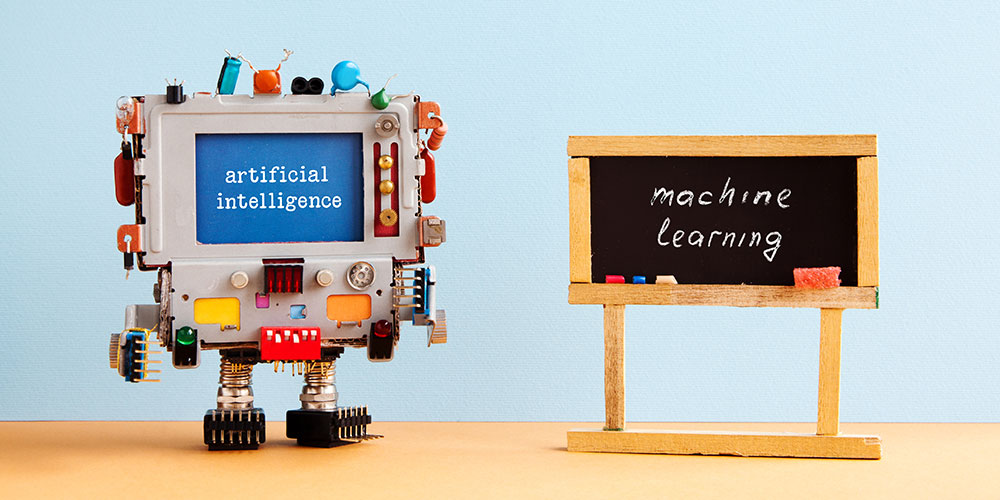Research shows that anywhere from 20 to 40 percent of teachers’ work could be automated with existing technology. Does that mean that artificial intelligence is on the brink of taking over teachers’ jobs? Absolutely not! Rather, artificial intelligence can save teachers from hours of tedious, repetitive work, freeing them up to do more of what only they can: namely, inspire, mentor, and build relationships with their students.
Check out these tips and tools for using artificial intelligence to help you do the work you love most.
How AI Can Streamline Teachers’ Responsibilities
So what exactly is artificial intelligence, and what role can it play in K–12 education? According to the Brookings Institution, artificial intelligence is software that can respond to data or inputs with intelligence and decision-making power normally reserved for humans. In other words, artificial intelligence doesn’t just organize or report on data; it can take in data and automatically give actionable outputs without waiting for additional directions from you.
Let’s take a look at what AI might look like in your classroom, according to an article from WISE. Artificial intelligence can:
- Collect student data and make sense of it. Teachers have a ton of data about their students (think of the number of individual assignment grades you have for each student!). The problem is that many teachers don’t know how or don’t have the time to figure out how to make that data useful. AI can quickly collect, organize, and find patterns in data to give you new insights on students’ performance.
- Create a plan for personalized learning. Individualized, differentiated instruction is incredibly helpful for student success. But how can one teacher quickly and efficiently create individualized learning programs for 20+ students? The answer is AI. AI can analyze students’ strengths and weaknesses and give them learning resources that will help them accordingly.
- Allow teachers to focus on developing social skills. One thing technology can never do is form relationships with your students and teach them how to do the same with others. When AI is able to automate tasks that you would otherwise have to do manually, you’ll have time to focus on essential SEL skills and helping your students with the emotional side of learning, such as instilling a growth mindset and developing perseverance in the face of hardship.
- Identify best teaching practices. Years of experience and research can help teachers develop best practices—but data might be able to contribute as well. Artificial intelligence can provide you immediate and useful feedback to help you understand where students are struggling, which resources are helpful (or not), and which students respond best to which teaching strategies.
Artificial Intelligence in Action
According to the report Artificial Intelligence Market in the U.S. Education Sector, the use of artificial intelligence in education will have grown 47.5% by 2021. But what will AI actually look like in the classroom? Here are some thoughts from Forbes:
- AI will prepare students for the future. Teachers are in the unique position of having to prepare students for a future none of us have seen yet. By the time your students are in the workforce, there will be jobs and technologies that don’t exist right now, though it’s fair to guess that artificial intelligence will be a part of them. Exposing students to AI in the classroom now will only benefit them in the future.
- AI can provide more sophisticated learning supports. As mentioned in the previous section, AI can go a long way in creating a highly differentiated curriculum for each student. The easiest way it can do this is to test students to see where they need additional supports. However, AI may soon be able to make this process even faster as machines learn to read facial expressions; with this technology, students can automatically receive additional resources the moment they appear confused or frustrated by a topic.
- AI can improve accessibility. AI software can open the classroom to students who might have otherwise had limited access. For example, AI can automatically translate and create subtitles for what a teacher is saying so students who speak a different language or have hearing impairments can understand. These capabilities may help open the classroom to students who can’t attend school because of an illness or whose school doesn’t offer a particular subject.
- AI can automate more educational tasks. Obviously, computers can already grade multiple-choice questions, but AI technology is advancing to the point where it may soon be able to grade written assignments. Similarly, interactive bots may be able to provide more sophisticated tutoring assistance when parents aren’t available to help students with homework.
AI Tools for Teachers
There are tons of AI apps, programs, and tools out there that can help teachers. Here are some artificial intelligence assistants that, once you set them up, will save you time down the road.
- Gradescope: Speed up grading and never have to haul papers home again. Gradescope allows you to scan student work, grade from anywhere using time-saving, flexible rubrics, and upload and easily analyze students’ grades. Plans are available for as little as $1 per student per course.
- Knowji: Knowji is a vocabulary app that gives students a fun, scientifically backed way to learn new words. Teachers report that Knowji reaches all types of learners and is great for everything from helping struggling readers to SAT prep. Free and paid versions are available from the Apple App and Google Play stores.
- Hubert: Particularly with distance learning, it can be hard to know whether students are struggling with the content or lesson format. Hubert is an advanced chatbot that will survey your students for you and compile the results so you know what’s working and what changes you need to make. You can try Hubert for free for the first 50 chats, and after that, it costs about $1 per chat.
- Oddizzi: Oddizzi’s mission is to “put geography back on the map.” This online, subscription-based resource provides images, short films, thousands of quiz questions, and interactive maps to help elementary students become geography pros. Oddizzi offers a free seven-day trial and is approximately $125 per year after that. This one subscription covers every student and teacher in your school, and is available for both classroom and home use.
More on Using Tech in the Classroom
COVID-19 pushed many teachers into online teaching faster than they wanted to go, and for some, the transition understandably left a bad taste in the mouth for technology tools. However, when you find the tools that work for you and your teaching style, you’ll be glad for digital assistants that do some of the heavy lifting for you.






